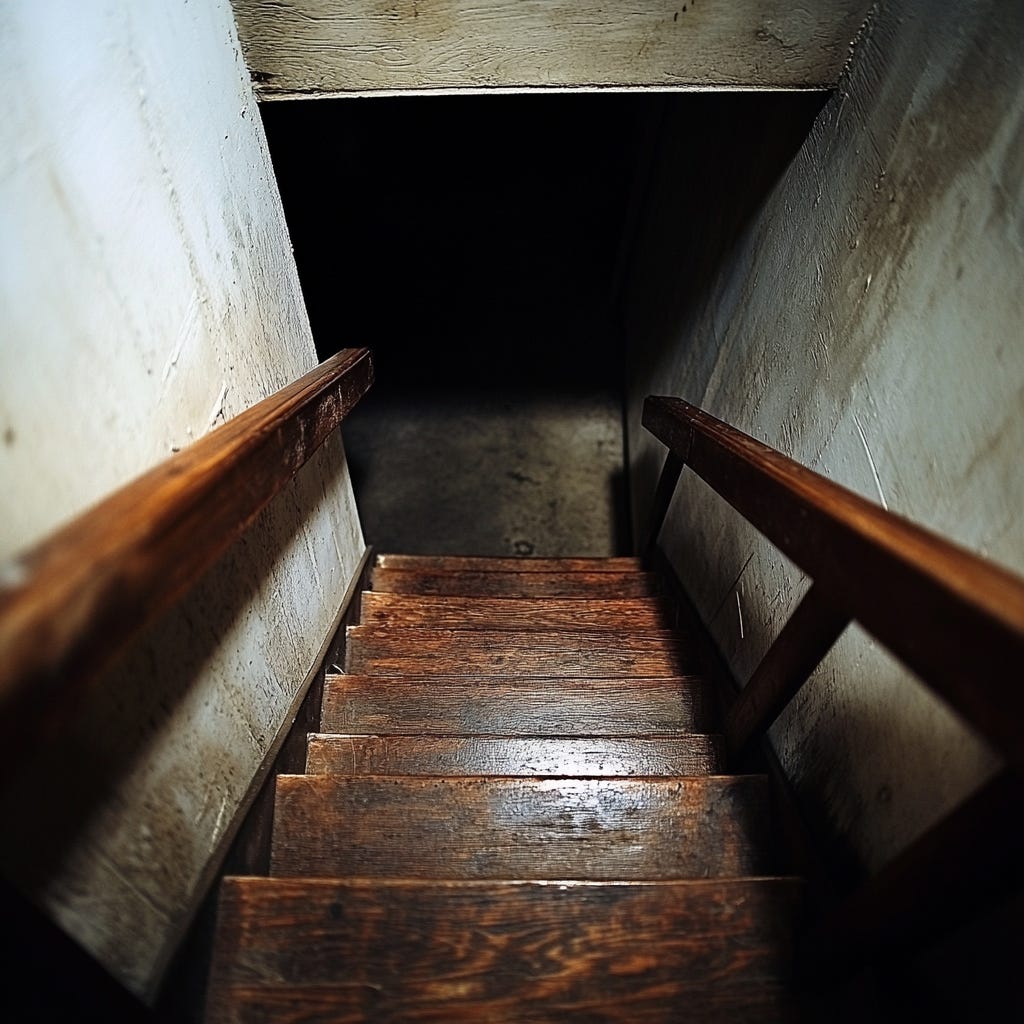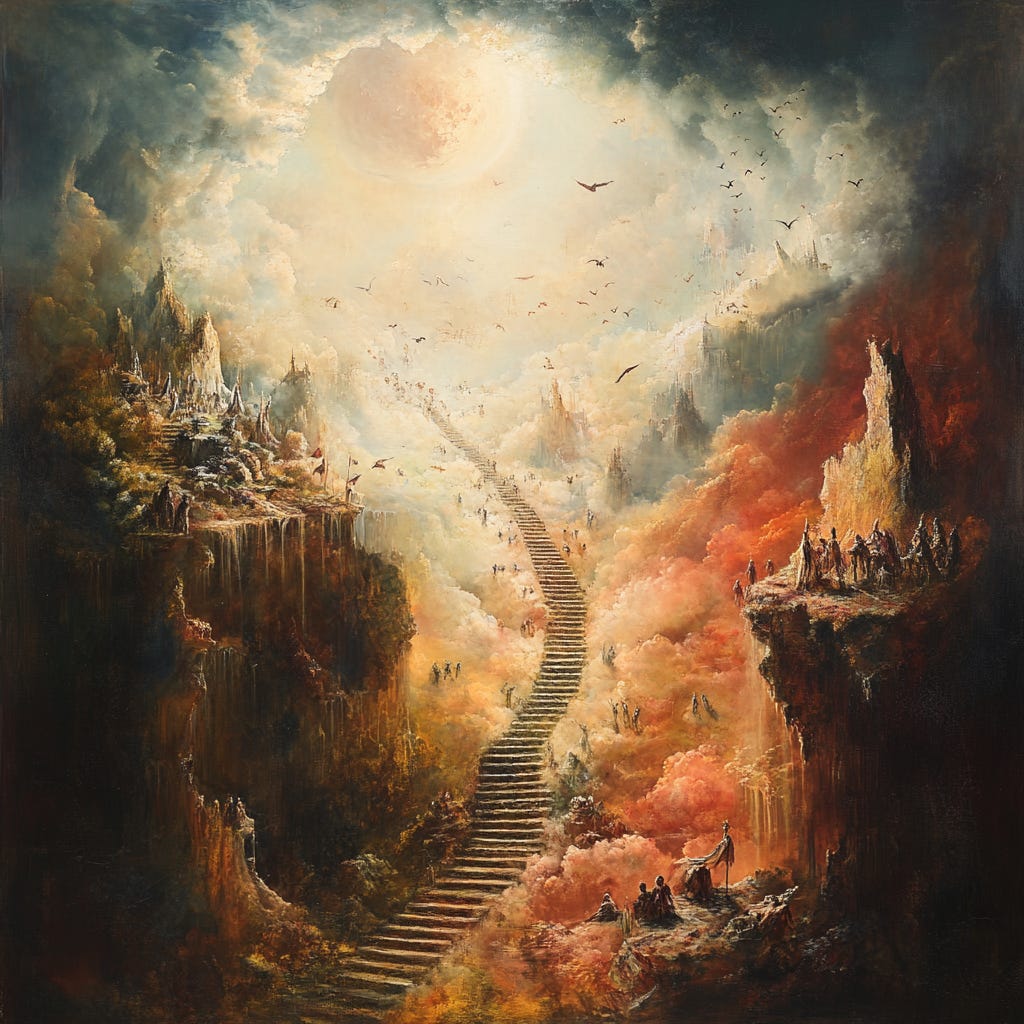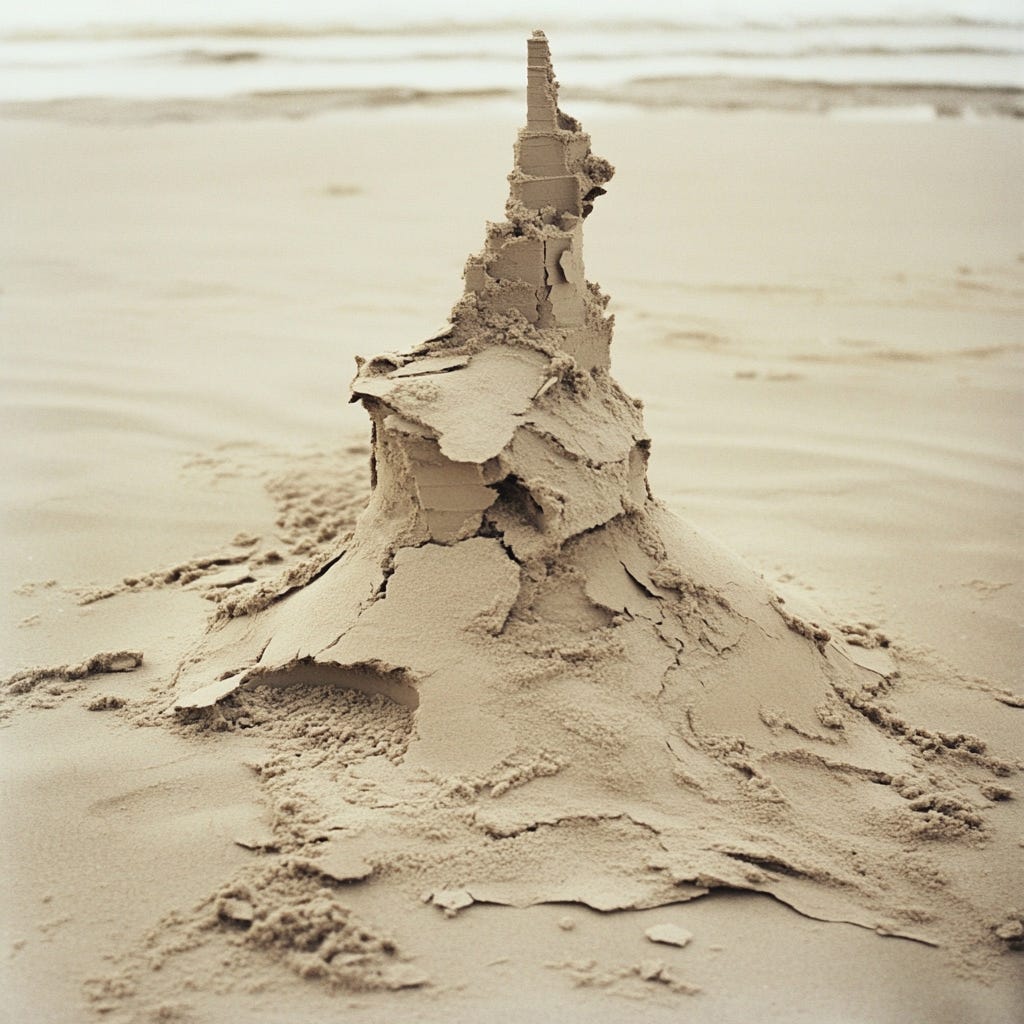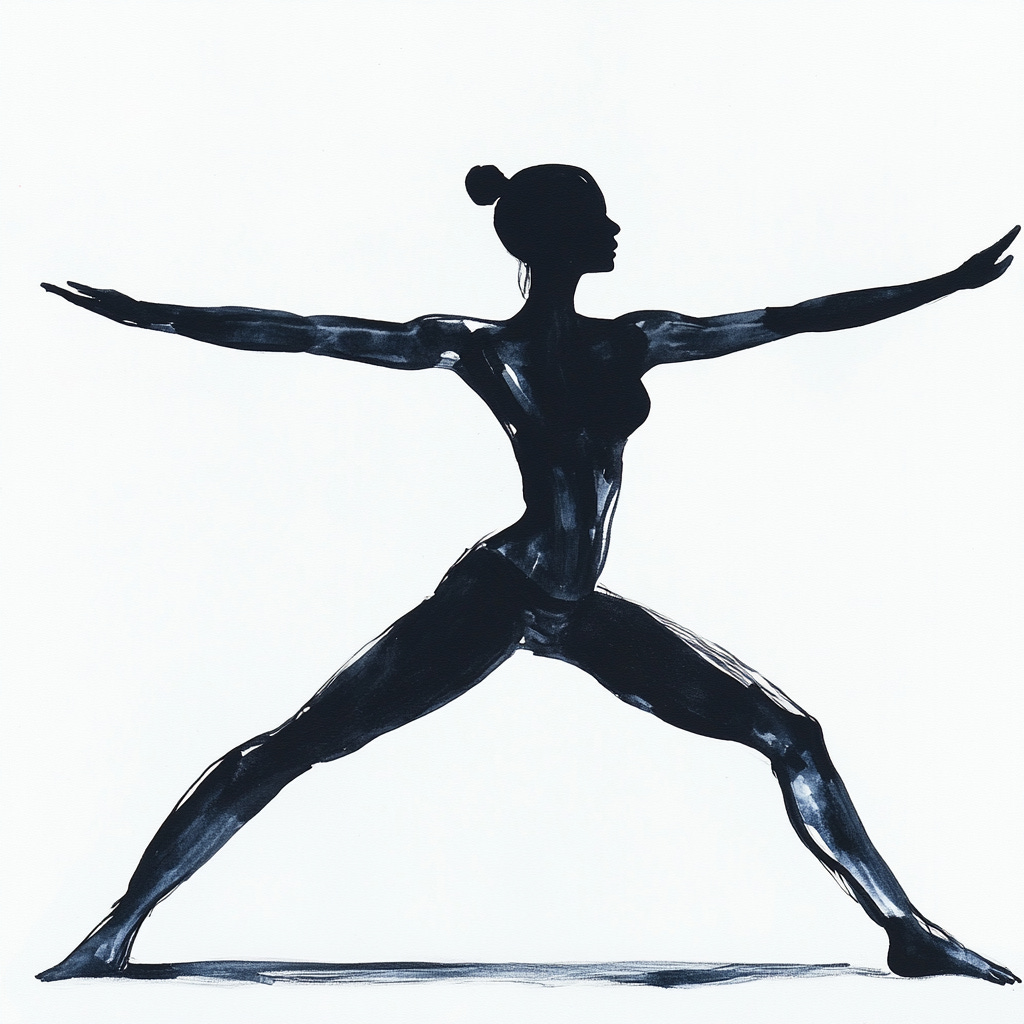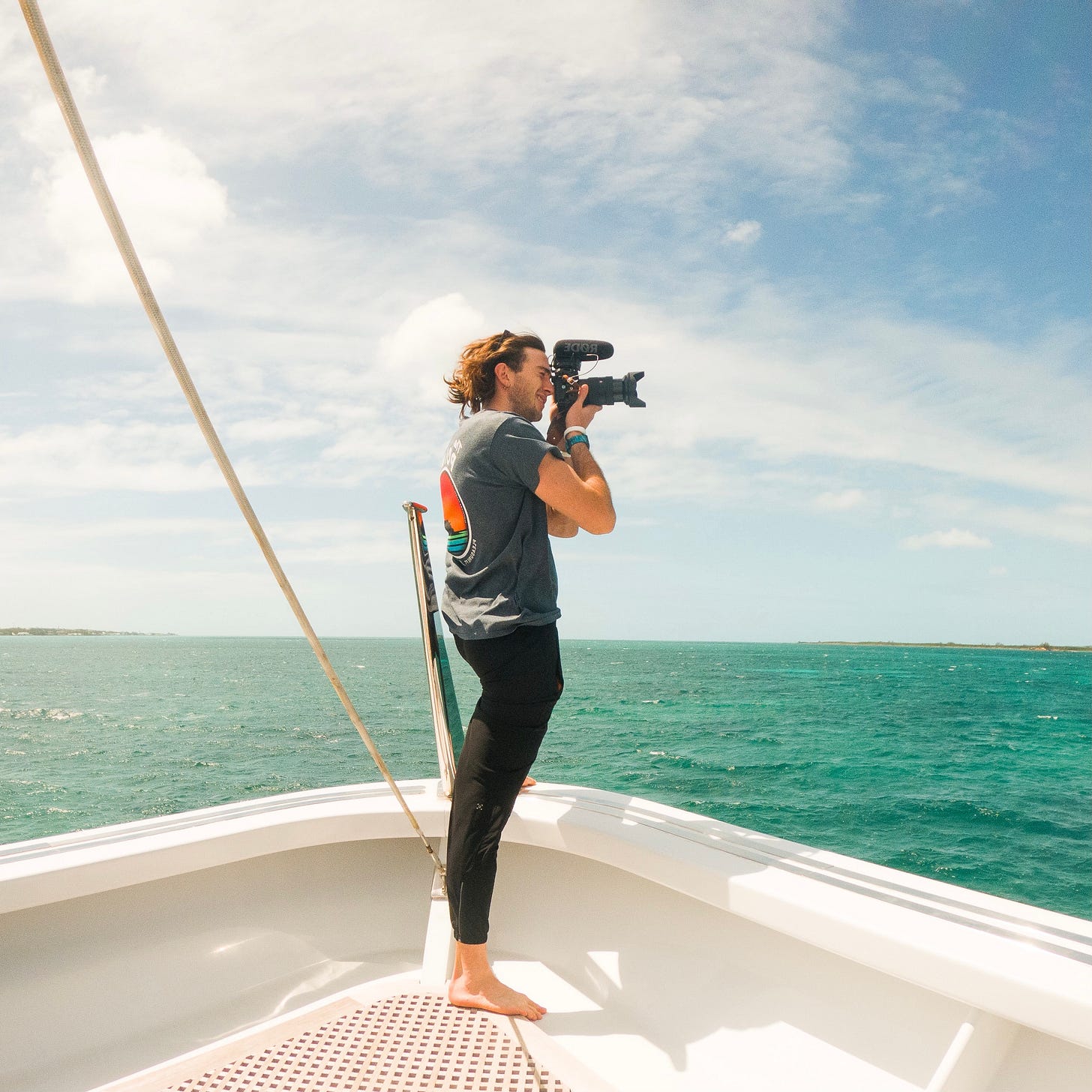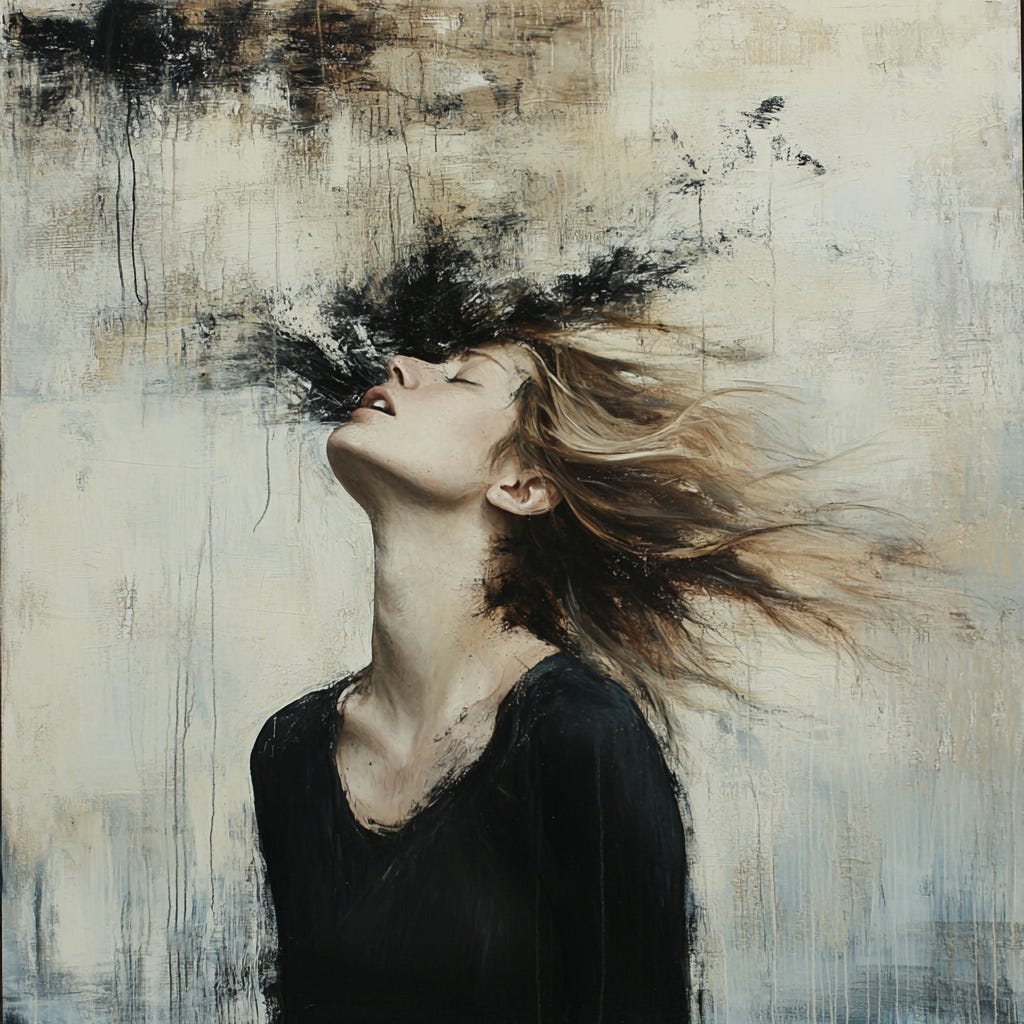What Vinyasa Yoga Teaches Us About Fear and Death
How practicing presence in the context of impermanence fosters resilience and peace with mortality
Ok, so this one is going to be long, and pretty personal.
If I’ve managed to write this with enough rhythm and flow to make it bearable to someone who isn’t me, I hope that my sharing brings a little more clarity and perspective to your own thoughts on these themes. The experiences and ideas are, of course, my own.
But when one talks about death, I feel like it really ought to be personal.
Lofting around platitudes on such a subject is more likely to be disrespectful than helpful, especially if you’ve never actually met death and shook his cold, uncompromising hand.
My intention with writing this is not to upset anyone, nor is it to cast myself as some kind of performative ‘dark yogi’ showing off how strong he is by the fact he can talk about harsh things such as death.
There are certainly those who seem to believe that they transcend the fear of death by speaking loudly about it. But I think that’s really just announcing your presence to the dark empty basement by stomping on the stairs or clearing your throat. We betray our uneasiness with the unknown by our attempts to fill it.
Until you’ve watched death happen, or been very near to it yourself through some accident or illness or circumstance, it’s merely a concept.
Of course, even just as a concept, death can be quite powerful. Thinking of it too often can drain away all color and joy from life’s landscape, for it’s grim visage truly lurks beneath the surface of all life’s greatest pleasures. In a very literal sense, all things are in the process of decay. Another happy day by the beach is another step towards the end of all days.
However, the inverse is also true.
A vision of the world articulated by death is an experience with a very clear view of life. Really, our only solid understanding of life is granted to us by death.
That thing we call ‘life’ is essentially whatever happens between the first and last breath…that unraveling and raveling yarn of interwoven moments and experiences arising from the raw combustion of our consciousness colliding with various happenings as we move through the world. We are organic matter animated by the energy of the universe emanating from the sun, which is itself one locus of energy exploding out into space, surrounded quite literally by emptiness. But is it really empty if the sun and earth and all that, is ‘in’…it…?
Sorry, I didn’t mean to get so meta about all this.
And I guess it’s not really personal yet, but that’s coming later.
I’m truly not the type that’s going to spill a bunch of ink attempting to convince myself, or anyone else, that life never truly ends. As fun as that is, and as technically true as it might end up being, I don’t think it’s all that useful to informing the way that we actually live as individuals.
Generally, yogis take some flack in the west for their thinking on reincarnation and karma. In my humble opinion, that thinkings a lot more rooted in logic (see: law of conservation of energy) than other ideas we usually fail to criticize about that pervasive question—what happens after we die?
And actually, as I write this, I’m coming to notice that the problems with our fear of death could really be down to the fact that our typical phrasing of this question leaves us open to the wild narratives about the after-life that capture the mind, placating some, and torturing others.
Asking “what happens after we die?” is truly asking for a blueprint. We want the builder’s plans for the next project. When “we” break down, what is to be built out of our pieces? When the flames sending up the swirling smokes of our thoughts expire, where does the wind blow the plumes?
The very nature of that question highlights the underlying misapprehension that plagues many of us, and I think therein lies the root of all fear.
To be more accurate, what we should ask instead is: “what happens when my conscious experience of the world ceases?”
We tend to identify ourselves with the contents of consciousness, rather than consciousness itself. Personality, memory, feelings, thoughts, emotions…all the things that occasionally fill the space in which our experiences arise. All of those things, as a matter of observation, are truly just patterns that visit our little patch of reality for one reason or another, and then are gone as quickly as they arrived. Even the stuff that sticks around longer than we might want—pain, for example—eventually just disappears, doesn’t it? There is a moment where pain is present, and another where it is not (even if it has been slowly receding for a while).
If we take it as our implied goal to hold as many of those things which we decide that we prefer in said space for as long as we can, we are demonstrating the attachment from which fear (and according to the Buddhists, most suffering) arises.
What happens when the water holding a sand castle together dries up and it tumbles down? You could say: “the castle is gone” and nobody would challenge you. But you probably wouldn’t say “the beach is bigger”. No, indeed, the sand is still simply sand, being blown around by the wind. The constructs appear and disappear, the substrate simply is, as it already…was.
So if being human is like being a sand castle, what happens after we die is that we go back to being sand.
For you are dust, and to dust you shall return.
A pure materialist might be satisfied there. But there’s a difference between ‘being a sand castle’ and ‘being a sand castle and knowing that you are a sand castle’. The fact that there’s anything that it is ‘like’ being you, differentiates us from simple matter, even if just conceptually.
In any case, here we all find ourselves, sand castles slowly crumbling on the beach of life/death. Most of us are evidently content spending the majority of our animated time whittling away at the facades and decorations on our outer walls, meticulously carving and neatening and building and rebuilding. Adorning ourselves with pretty shells and polished stones, trying just about anything to further distinguish ourselves as something apart from the flat nothingness of the beach.
But therein lies the pathway to a kind of liberation (at least intellectually) from this process of decay. The beach is not, in fact, nothingness. It is all actually “something” and the somethings which we identify ourselves as, are just forms arising from it.
The thing to recognize is that, by nature, none of those forms can last.
When we practice vinyasa yoga, we train our attention down into the present moment by focusing on the movement of the breath, and we move our bodies through a series of postures that mirrors the process from birth til death. First we lay inert, arriving. Then we crawl, feeling into our bodies, than we stand up tall, breathing in and expanding and growing. We take aim in Warrior 2, striking forward into space with Warrior 3, eventually becoming more still in Tree, before falling back to the ground, taking a few other expressions, each more passive and inert than the last, until we lie on our backs in Savasana (corpse) pose.
I’ve heard it said that Hatha yoga emphasizes the art of bringing opposing forces into balance to create an experience of stability, whereas Vinyasa emphasizes the impermanence of experience to create an experience of peace amidst instability. We visit each posture for but a few moments, trying our best to breathe and be present, learn what we can from the experience, then we move on.
By that fluidity, we essentially express the stringing together of distinct moments as if they were one continuous moment. Like dots getting closer and closer together until they overlap and become just a single stream of line.
- - - - — ————— ♾️
It’s a more accessible microcosm of the macrocosm expressed in the movement from the 6th to 7th limbs of yoga. From single pointed focus (dharana) to broad awareness & meditation (dhyana). It’s when the focal point ceases to be a point and suddenly is perceived as indistinct from—and experientially the same as—the space around it.
This past Tuesday during practice when someone brought up the theme of feeling stuck and being unable to confront certain things out of what they recognized as FEAR, I was reminded viscerally of why I started teaching yoga (again).
A little over three years ago I was in the Caribbean shooting footage for a documentary that I thought was going to be my first big break as an aspiring filmmaker. It was a solo gig, entrusted to me alone by a subject who preferred not to have a lot of fuss and fumble around them, and moreover wanted to invest in an unproven talent (for better or worse). I’d been on the road for 4 months when I got a call from my sister saying that our mother’s cancer (which I’d found out about 2 weeks into the project) had been determined to be terminal. 2 months left to live. Maybe 5 or 6 with some palliative chemo.
The coming Thanksgiving and Christmas would surely be the last we spent with her. As a pursuant of a creative career, I was used to uncertainty. This certainty struck me like a freight train.
We tend to resist experiences when we are afraid that they will take something away from us, leaving our sand castles diminished and feeble. Practicing Vinyasa is really a practice of creating peace amidst that struggle. Depending on the body, some poses bring more resistance than others. Some you need to modify. But over time, we use the intentionality of our attention to smooth over those barriers and create a sense of be-ing that flows like water around, over, or under all obstacles. Over time, that flow carves our streams of consciousness deeper and deeper into reality until they become wide and difficult to damn up or diminish by any outflow.
If we can recognize that we are already feeble and temporary, the only thing that really ought to be diminished by experiences of loss is the illusion of separateness between our consciousness and experience itself that we maintain in our minds. If we are in fact, the beach, then the crumbling of our castles is nothing to fear.
Of course, nothing in this clever arrangement of thoughts could stop the tears I cried boarding my plane back to my hometown in November of that year. Nor should it have, really. My mom and I were very close, and she truly understood me on a core level stretching all the way back to my very first breath that I can expect of nobody else in my lifetime. She was the center of my whole family, and her pending departure was set to leave us all without the trunk we’d grown from.
But I had been practicing yoga for a few years at that point, and I had taught briefly at the studio I learned at before the covid-19 shutdown. Dread, fear, and impending loss were not the only things I had to work with. My practice had taught me to stay present no matter what challenges arise — to clear my mind and open my heart in the face of the unknown (or the terrible known, in this case) by virtue of effort and focus — and maintain resilience and coherence amidst the ever present storm of contravening thoughts. I let the sand castle of my film project fall apart in order to go and bear true witness to the fall of my mother’s departure from life. To bring my energy and ability, and to be of service in her (and my father’s) time of need.
Looking back, what I truly brought was simply appreciation.
And appreciation is very much a skill. Just as I’d learned to appreciate each breath and each movement in my own body, I hoped to help my mother appreciate the final breaths happening in hers by lending my loving and supportive presence to her process of dying. I had my camera gear with me, so I put my professional skills to use in what will probably still be the most important application of those that will ever occur—capturing some of the final moments we were able to spend together in a way that my family (and you, if you’ve read this far) can perpetually enjoy.
Our lives are truly filled with magical little moments like these. Each breath is miracle of untold proportions, that out of all the possible combinations of matter and energy and whatever consciousness is made of — you are here, breathing. And each of these moments is followed closely by another, and another, and another…well, you get the picture…
- - - - — ————— ♾️
The only variable of concern, which luckily seems to be within the realm of our autonomy as individuals, is whether we choose to pay attention to those moments — to appreciate them.
That’s truly the depth of what we are invited to practice every time we roll out our mats. Step out of the construct, and into the substrate. That’s where everything is appearing. It’s not about detaching from everything, it’s about dropping in. Being it. Being you. Being.
From that space you can walk into the toughest moments of your life and walk out intact. You can be of service to those who need you — in love, rather than obligation.
What yoga is ultimately teaching us is to simply be present with whatever arises in our space.
We practice noticing and focusing, and withholding judgments and expectations about the way that things “ought to be”.
You can think “I am a fit person so therefore this chair post shouldn’t be as hard as I’m experiencing it right now” and frustration arises and then suddenly you’re in a reductive state of mind. You might physically be able to stay in the pose, but your experience of it can degrade quickly into agony.
You can think “I am young and healthy so death is still far away I don’t need to worry about being mindful I can just enjoy the pleasures in my life, if I’m becoming mindful it’s just to be able to enjoy things more” but true mindfulness is a blade that cuts both ways. Presence with what we want to experience, and presence with what we don’t want to experience.
If you’re thinking: “Maybe I don’t actually want mindfulness then” I honestly don’t think I can blame you at this point. The blunted haze of material comforts often beckons to us all. Confronting fears and moving through challenges is difficult, and the process is often temporarily harder than just staying in low-grade pain.
But take heart! This work is worth it in the end. And it prepares you for the hardest yet most profound moments life can throw at you.
Move, breathe, and let go.
Let go…let go.
When we learn to identify as the space rather than the filling, nothing is lost, and everything is gained.



